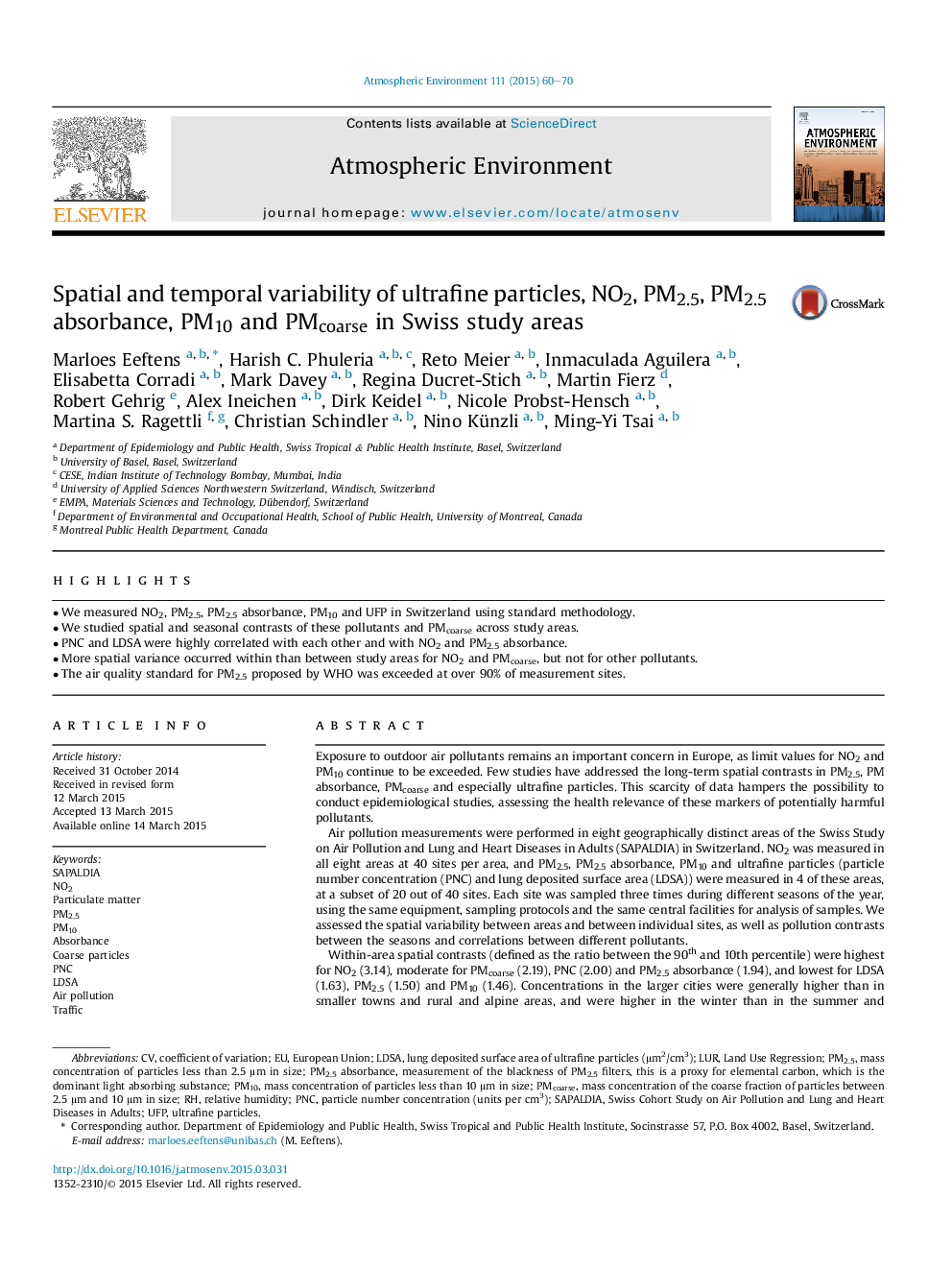| Article ID | Journal | Published Year | Pages | File Type |
|---|---|---|---|---|
| 6337937 | Atmospheric Environment | 2015 | 11 Pages |
Abstract
Within-area spatial contrasts (defined as the ratio between the 90th and 10th percentile) were highest for NO2 (3.14), moderate for PMcoarse (2.19), PNC (2.00) and PM2.5 absorbance (1.94), and lowest for LDSA (1.63), PM2.5 (1.50) and PM10 (1.46). Concentrations in the larger cities were generally higher than in smaller towns and rural and alpine areas, and were higher in the winter than in the summer and intermediate seasons, for all pollutants. Between-area differences accounted for more variation than within-area differences for all pollutants except NO2 and PMcoarse. Despite substantial within-area contrasts for PNC and LDSA, 74.7% and 83.3% of the spatial variance was attributed to between-area variability, respectively. Coefficients of determination between long-term adjusted pollutants were high (R²>0.70) between NO2, PM2.5 absorbance, PNC and LDSA and between PM2.5 and PM10. The measurement of spatial patterns for this large range of outdoor air pollutants will contribute to a highly standardized estimation of individual long-term exposure levels for SAPALDIA cohort participants.
Keywords
Related Topics
Physical Sciences and Engineering
Earth and Planetary Sciences
Atmospheric Science
Authors
Marloes Eeftens, Harish C. Phuleria, Reto Meier, Inmaculada Aguilera, Elisabetta Corradi, Mark Davey, Regina Ducret-Stich, Martin Fierz, Robert Gehrig, Alex Ineichen, Dirk Keidel, Nicole Probst-Hensch, Martina S. Ragettli, Christian Schindler,
